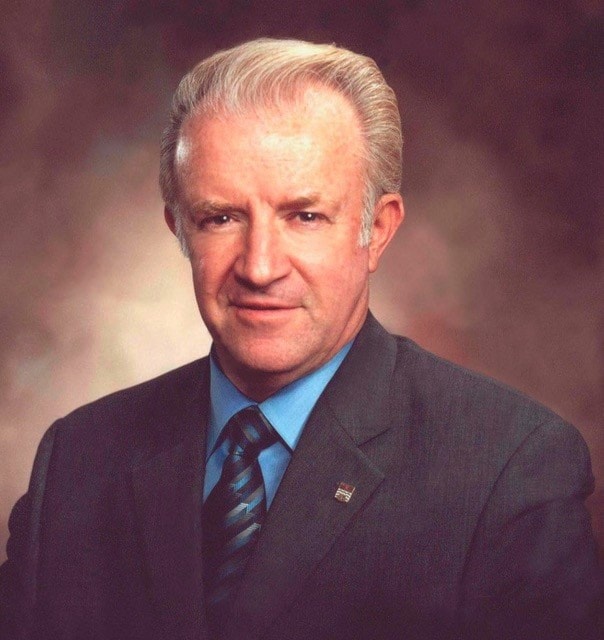Jim Gouk is an aviation consultant working with the City of Castlegar. He was the Member of Parliament for the Kootenay region from 1991 to 2006.
An article published in the Nelson Star on November 28 and a subsequent letter from a former Air Canada pilot are challenging the wisdom of the study the City of Castlegar is having done by Jeppesen.
To answer that, one first must explain just how new technology approaches work.
If an aircraft is flying into West Kootenay Region Airport (WKRA) on a clear day, they will fly through the valleys flying a curved approach that will allow them to arrive at the airport at an appropriate altitude and position to continue in and land.
By contrast, conventional approaches to WKRA rely on either ground based equipment or global positioning satellites (GPS) to set the aircraft on a fixed track, then through a series of ground based references or satellite way points, allow the aircraft to descend in stages to progressively lower altitudes until they either become visual and fly the rest of the landing operating with reference to the ground or to carry out a missed approach procedure if they have not obtained visual reference with the ground.
There are two distinct disadvantages to this type of approach. First, the straight track takes the aircraft over obstacles that require higher altitudes to be maintained that a pilot would fly around if they were visual.
Second, the nature of the approach at Castlegar often takes the aircraft south of the airport on a southbound heading before the pilot acquires visual reference to the ground.
That means that the pilot now has to manoeuvre the aircraft in a narrow valley in marginal weather to return to the airport to land.
That is why the limits are so high and sometimes people on the ground see the aircraft on approach but it does not land.
By contrast, an RNP approach uses GPS, combined with on board equipment to actually fly the aircraft on a curved approach which removes both disadvantages of a conventional approach.
By flying a curved approach, the aircraft flies between, rather than over obstacles just as a pilot flying visually does.
That allows the aircraft to maintain a consistent descent and arrive at the airport at a lower altitude.
It also allows the aircraft to reach the minimum point at which the pilot has to switch to visual reference to the ground with the airport still in front of the aircraft, avoiding much of the maneuvering required by a conventional approach.
Both the article and the letter suggest that there is no new technology since 2014 that would justify undertaking the study by Jeppesen.
In actual fact the solution for improved approaches at Castlegar lies not in even newer technology, but rather by adoption of technology now in use in the rest of the world.
RNP was originally developed by Alaska Airlines for flights into challenging terrain like Castlegar’s. For years, it was used in many American airports and other locations in the world, but not in Canada.
Then Westjet obtained exemptions from Transport Canada and started developing RNP approaches at Canadian airports.Transport Canada has adopted a policy of approving criteria already approved by the FAA (Federal Administration Authority) in the USA, provided it has been developed by qualified design specialists and can be demonstrated to follow the same criteria approved by the FAA.
Special RNP departures have been developed around the world that utilize the lower RNP levels.
These departures are all based on criteria developed by the companies that have designed the departures.
Jeppesen has developed their own RNP AR departure criteria that has been approved by the FAA for use in designing Special RNP AR departure procedures.
The article and letter imply that the study is a waste of money. To be sure, there is no guarantee of the outcome.
It is a calculated risk undertaken by the City of Castlegar, but with huge benefits if successful. It is not about one-upsmanship as implied in the letter.
It is about the immense economic benefit to the entire region if they can have a reliable, low limit airport. Castlegar already has the figures to back this up.
This might bring a question of why not get Ministry of Transport approval before spending all that money on a study.
Unfortunately the system just doesn’t work that way.
To get Transport Canada approval, you have to be able to demonstrate the design and show that it follows the criteria already established and approved by the FAA.
Castlegar is taking a bold initiative and the residents of the entire region should be pleased that they are. If successful, the benefits will affect nearly everyone, even those that never fly.
